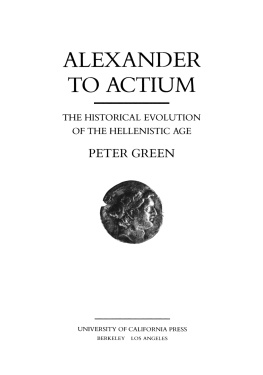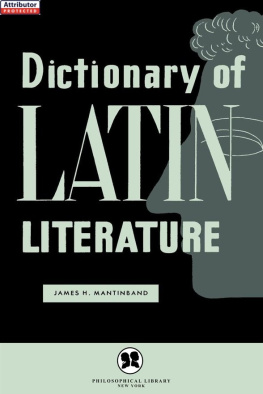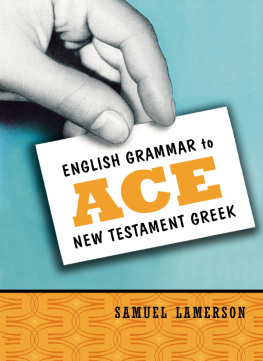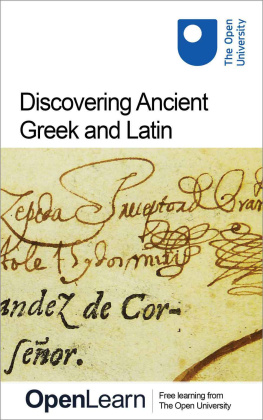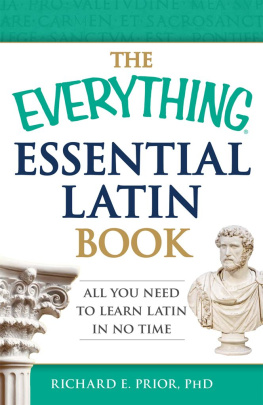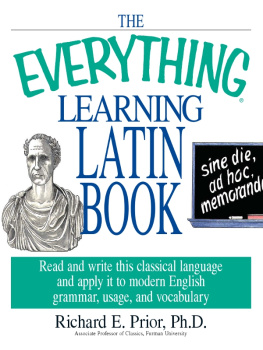Green - The Greek et Latin roots of English
Here you can read online Green - The Greek et Latin roots of English full text of the book (entire story) in english for free. Download pdf and epub, get meaning, cover and reviews about this ebook. City: Lanham, year: 2014, publisher: Rowman & Littlefield Publishers;Rowman et Littlefield, genre: Children. Description of the work, (preface) as well as reviews are available. Best literature library LitArk.com created for fans of good reading and offers a wide selection of genres:
Romance novel
Science fiction
Adventure
Detective
Science
History
Home and family
Prose
Art
Politics
Computer
Non-fiction
Religion
Business
Children
Humor
Choose a favorite category and find really read worthwhile books. Enjoy immersion in the world of imagination, feel the emotions of the characters or learn something new for yourself, make an fascinating discovery.

The Greek et Latin roots of English: summary, description and annotation
We offer to read an annotation, description, summary or preface (depends on what the author of the book "The Greek et Latin roots of English" wrote himself). If you haven't found the necessary information about the book — write in the comments, we will try to find it.
Green: author's other books
Who wrote The Greek et Latin roots of English? Find out the surname, the name of the author of the book and a list of all author's works by series.
The Greek et Latin roots of English — read online for free the complete book (whole text) full work
Below is the text of the book, divided by pages. System saving the place of the last page read, allows you to conveniently read the book "The Greek et Latin roots of English" online for free, without having to search again every time where you left off. Put a bookmark, and you can go to the page where you finished reading at any time.
Font size:
Interval:
Bookmark:

The GREEK & LATIN
ROOTS of ENGLISH
Published by Rowman & Littlefield
A wholly owned subsidiary of The Rowman & Littlefield Publishing Group, Inc.
4501 Forbes Boulevard, Suite 200, Lanham, Maryland 20706
www.rowman.com
16 Carlisle Street, London W1D 3BT, United Kingdom
Copyright 2015 by Rowman & Littlefield
First edition 1990. Second edition 1994. Third edition 2003. Fourth edition 2008.
All rights reserved. No part of this book may be reproduced in any form or by any electronic or mechanical means, including information storage and retrieval systems, without written permission from the publisher, except by a reviewer who may quote passages in a review.
British Library Cataloguing in Publication Information Available
Library of Congress Cataloging-in-Publication Data
Green, Tamara Marcus, 1944 author.
The Greek & Latin roots of English / Tamara M. Green. Fifth edition.
pages cm
Includes bibliographical references.
ISBN 978-1-4422-3327-0 (pbk. : alk. paper) ISBN 978-1-4422-3328-7 (electronic)
1. English languageForeign elementsGreek. 2. English languageForeign elementsLatin. 3. Greek languageInfluence on English. 4. Latin languageInfluence on English. 5. English languageRoots. I. Title. II. Title: Greek and Latin roots of English.
PE1582.G6G74 2014
422'.48dc23 2014008859
 The paper used in this publication meets the minimum requirements of American National Standard for Information SciencesPermanence of Paper for Printed Library Materials, ANSI/ NISO Z39.48-1992.
The paper used in this publication meets the minimum requirements of American National Standard for Information SciencesPermanence of Paper for Printed Library Materials, ANSI/ NISO Z39.48-1992.
Printed in the United States of America
Language is a city to the building of which every human being brought a stone. Ralph Waldo Emerson's words are a recognition that the development of language and the ways in which we use it have been, in large measure, historically and culturally determined. But it is also true that not only do individuals and cultures shape language but language shapes us; the way we speak and what we say define us and allow us to articulate our worldview. Ideas take on life only when we can give them expression, and one of the ways by which we do this is through our ability to use language. The more adept we are at this, the greater are our opportunities to explore and create and interpret the variety of our experiences.
Because language is a social product, it is constantly changing, not only structurally, but in the very meaning of words. No language perhaps offers a better opportunity to understand linguistic change than English, especially in the realm of vocabulary. English has absorbed vocabulary from other languages, but as a result of both the accidents of history and the great esteem in which ancient Greek and Roman culture had been held in the European tradition, over 60 percent of all English words have Greek or Latin roots; in the vocabulary of the sciences and technology, the figure rises to over 90 percent. Thus, through the study of the Greek and Latin roots of English, students not only can expand their knowledge of English vocabulary, but also come to understand the ways in which the history of the English language have shaped our perceptions of the world around us.
The approach of this text is thematic: vocabulary is organized into various topics, including politics and government, psychology, medicine and the biological sciences, literature, ancient culture, and religion and philosophy. Unlike those textbooks that treat Latin and Greek roots separately, these lessons present the two vocabularies as an organic whole. Thus, the emphasis is placed on language and the way in which it has developed and changed, rather than on single words, or even groups of words. The exercises at the end of each chapter are cumulative, reinforcing both vocabulary already learned and analytical skills developed in previous lessons. In addition to teaching vocabulary skills, the text has another, perhaps more subtle, aim. It is hoped that through the study of the Greek and Latin roots of English, students will begin to learn the pleasures (and pitfalls) of language study.
The original development of the materials for this text was made possible by a grant to Hunter College from the National Endowment for the Humanities.
The fifth edition has retained the organizational and thematic approach of the earlier editions. New material and exercises have been added to all chapters.
- In the vocabulary, both the nominative and genitive cases are given for all Latin nouns and adjectives. The principal parts of Latin verbs are also given.
- An English word followed by Greek in parentheses indicates that the word is Greek in origin.
- Because most words in English that are derived from Greek are learned borrowings, the genitive case of a noun or adjective is rarely cited, unless the compound form of the word is derived from that case.
- Vocabulary words are sometimes repeated in different chapters when necessary.
- Vocabulary words are generally listed in alphabetical order.
Symbols and Abbreviations Used
| Symbol or Abbreviation | Meaning |
| = | English meaning |
| > | from which is derived |
| < | derived from |
| cf. | compare |
| e.g. | for example |
Instructor's Manual
An Instructor's Manual is available to adopters of this text. It contains:
Answers to all the exercises in the text
Quizzes on each chapter
Two final examinations
Answers to all quizzes and final examinations
Supplementary exercises, including answers
Suggested English derivatives for chapters 38
Photographs
All photographs, unless otherwise attributed, are from the author's private collection.

A POLYGLOT STEW
(Or Food for Thought)

Child with a goose (Museo Capitolino, Rome)
When you cook a crane, make sure that the head does not touch the water, but is outside it. When it has been cooked, wrap it in a warm cloth and pull its head.
APICIUS (first-century CE Roman gourmet)
If, in fact, we are what we eat, the American people are the most cosmopolitan nation in the world. Just as the English language is a mixture of Germanic, Latin, and Greek roots with a heavy seasoning of the Romance languages, with just a dash of Native American, African, and Caribbean, and a sprinkling of Asian vocabulary, so does our diet reflect the various linguistic ingredients that go into the melting pot of American cuisine.
The Normans conquered England in 1066 CE, and introduced, via French, Latin-based names for various foods; nevertheless, although English tastes and vocabulary were about to be expanded, the Germanic contribution to the English menu did not disappear. For example, Middle English mete made peace with the Old French boef, thus allowing both meat and beef on the dinner table, while the Germanic-based chiken nested quite comfortably with the French poulet. And if the English seemed to have lost their
Next pageFont size:
Interval:
Bookmark:
Similar books «The Greek et Latin roots of English»
Look at similar books to The Greek et Latin roots of English. We have selected literature similar in name and meaning in the hope of providing readers with more options to find new, interesting, not yet read works.
Discussion, reviews of the book The Greek et Latin roots of English and just readers' own opinions. Leave your comments, write what you think about the work, its meaning or the main characters. Specify what exactly you liked and what you didn't like, and why you think so.



